QCF: Pokémon Super Mystery Dungeon
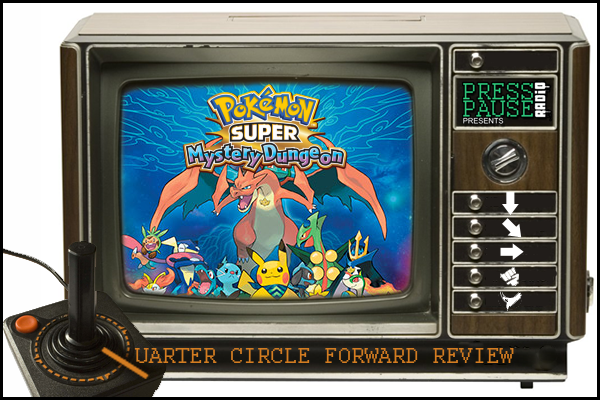
 intendo’s Pokémon property has endured over many years, taking all shapes and sizes beyond the humble role-playing game it once was, but main line of titles not withstanding—one particular spin-off series of Pokémon that really embraced traditional conventions and difficulty curve of the Japanese RPG.
intendo’s Pokémon property has endured over many years, taking all shapes and sizes beyond the humble role-playing game it once was, but main line of titles not withstanding—one particular spin-off series of Pokémon that really embraced traditional conventions and difficulty curve of the Japanese RPG.
Mystery, Dungeon, or as its most commonly referred to as; the dreaded rogue-like dungeon crawling bastard of a niche RPG sub-genre—something this intimidating doesn’t soundly like it would pair up with a concept like Pokémon very well.
Unsurprisingly, the reality to the success of the concept has been mixed at best over the years. The latest title to grace the series however strives towards an ambitious direction, one that actually takes advantage of the license it’s built around.
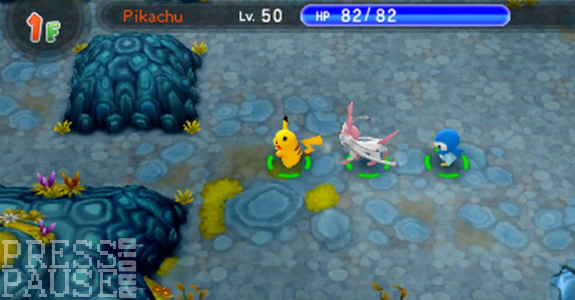
If you were ever curious about this obscure sublet of titles that feature the iconic pocket monsters, Pokémon Super Mystery Dungeon is the definitive entry to sample for new comers, and the refined sequel that every fan of the series could ever hope for.
If you’ve ever played a Japanese rogue-like, then the territory isn’t entirely unfamiliar here; gameplay revolves around exploring dungeon floors from an overhead-view on a grid-based map, searching for the exit to the next floor while surviving the hardships of hunger, traps, and of course, hostile contact with enemies.
These trademark conventions are designed to command the most vigilant skill that players can muster, feeling a constant sense of pressure with every move made as a result. Super Mystery Dungeon sticks to the core principles of this foundation, but unlike the previous entries, it introduces a new dynamic that embraces fundamentals that’re associated with Pokémon, and the concept significantly improves the experience in a multitude of ways—the rescue feature.
Falling to defeat in a dungeon is an inevitability that the difficulty curve is engineered to hand out like free kittens in front of Walmart—only with the consequence of losing all of your items, money, and equipment on hand to make the hurt of it a little worse. Super Mystery Dungeon introduces the ability however to send a reserve team of Pokémon to rescue you from the dungeon and floor which you were defeated in the main story.
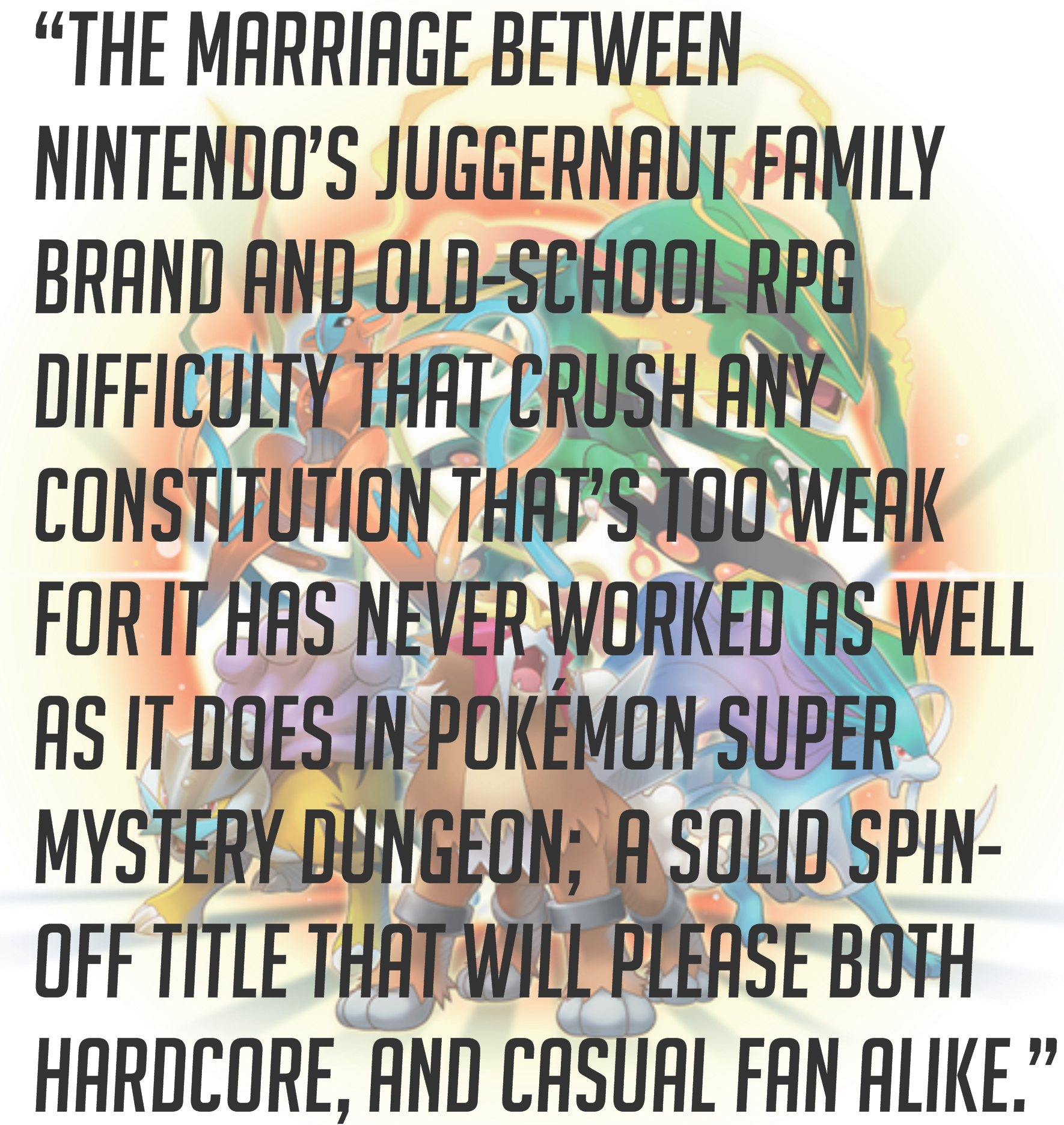 The helper Pokémon themselves are established on Pelipper Island, a completely different mode that’s completely independent from the campaign of the game, and depending on where you’re at within the main single player mode, you’re also granted access to the list of the monsters that were recruited for play.
The helper Pokémon themselves are established on Pelipper Island, a completely different mode that’s completely independent from the campaign of the game, and depending on where you’re at within the main single player mode, you’re also granted access to the list of the monsters that were recruited for play.
This feature alone works towards making the game more accessible without curbing the level of challenge that rogue-like is famous for, and is not only available as a single player option, but is expanded with a unique multiplayer construct that allows you to call for help from other players online through the use of passcodes and QR codes.
Sure, the reoccurring flaw behind the 3DS’ limited online infrastructure shifting players over to third-party means of networking is still really annoying, but the concept is still novel one that works when other players do participate with rescues.
Another change the Mystery Dungeon formula this time around is the recruitment dynamic; it’s much more user-friendly.
In the prior games of Mystery Dungeon, certain requirements in battle would need to be met for just the chance alone of recruiting a new critter to your team, and even then, every single monster met in this instance possess their own probability rate of successful recruitment; in short, it was tedious, and it mostly sucked. Super Mystery Dungeon however, changes the whole thing up with their introduction of the Connection Orb; a quest hub formatted as a spider-graph that links between all 720 officially announced Pokémon.
It works like this: Players are able to undertake initial quests that are represented by a Pokémon within its respective node, and once completed, the graph then expands revealing more Pokémon, which can even trigger a chain-connection of association between other monsters to the one that represented your completed request. Each connected Pokémon will then join your team, and can be selected for play thereafter, and can even play a role in certain quest types and their requirements when chasing them down to completion.
This spin on the “Gotta catch them all” theme of Pokémon is much more palatable as it doesn’t place the challenge of collecting the monsters o much on chance, but investment instead. The structure to the Connection Orb scheme is still grounded with certain restrictions that prevent players from falling into kind of comfort zone that could break the experience. Limitations range anywhere from how much grind you can invest into active expeditions from the Connection Orb at one time to how many times you can consecutively assign a powerful Pokémon you’ve recruited to a team, encouraging experimentation with other combinations of teams in the process.
The last addition is a small one, but it’s one that offers another level of satisfaction to tactfully playing the game in ways that the previous ones didn’t offer, the Alliance maneuver. Paying the cost of some hunger points on your belly meter, you can assign a combination attack where all three members of your active team will launch specific attack in succession of one another. You can register a number of different moves with different teams in a preset fashion, and in times of desperation, the tactic is effective in changing the odds in a pinch.
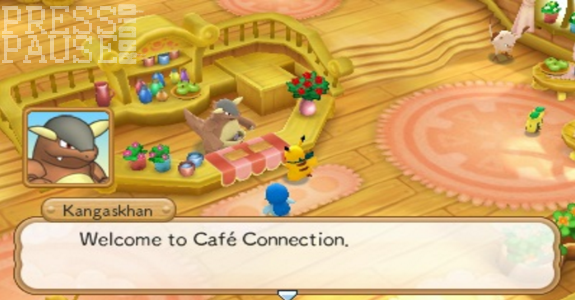
If there’s one trait that Super Mystery Dungeon has unfortunately inherited is that the game is held back by its laborious pacing; it just takes too long to get to the meat of the game. Before I had finally arrived at the point in the campaign where the more intriguing mechanics started to reveal themselves, I had to clock in over fourteen hours of gameplay, there’s absolutely no need for that.
The marriage between Nintendo’s juggernaut family brand and old-school RPG difficulty that crush any constitution that’s too weak for it has never worked as well as it does in Pokémon Super Mystery Dungeon; a solid spin-off title that will please both hardcore, and casual fan alike.
The 3DS hasn’t had the strongest showing in 2015, so it’s refreshing to know that it was able to produce at least one surprise venture that will have you checking for new StreetPass notifications again.
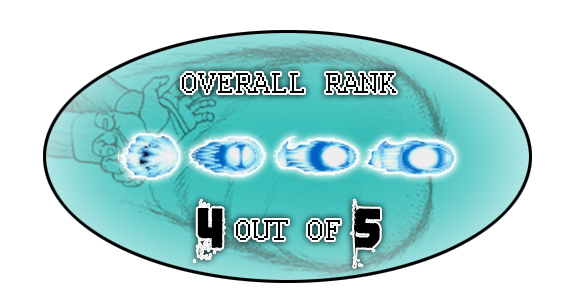
 3DS,
3DS,  Hard as shit,
Hard as shit,  Nintendo,
Nintendo,  Pokémon,
Pokémon,  Pokémon Super Mystery Dungeon,
Pokémon Super Mystery Dungeon,  Spike Chunsoft,
Spike Chunsoft,  rogue-like | in
rogue-like | in  QCF Reviews
QCF Reviews 









